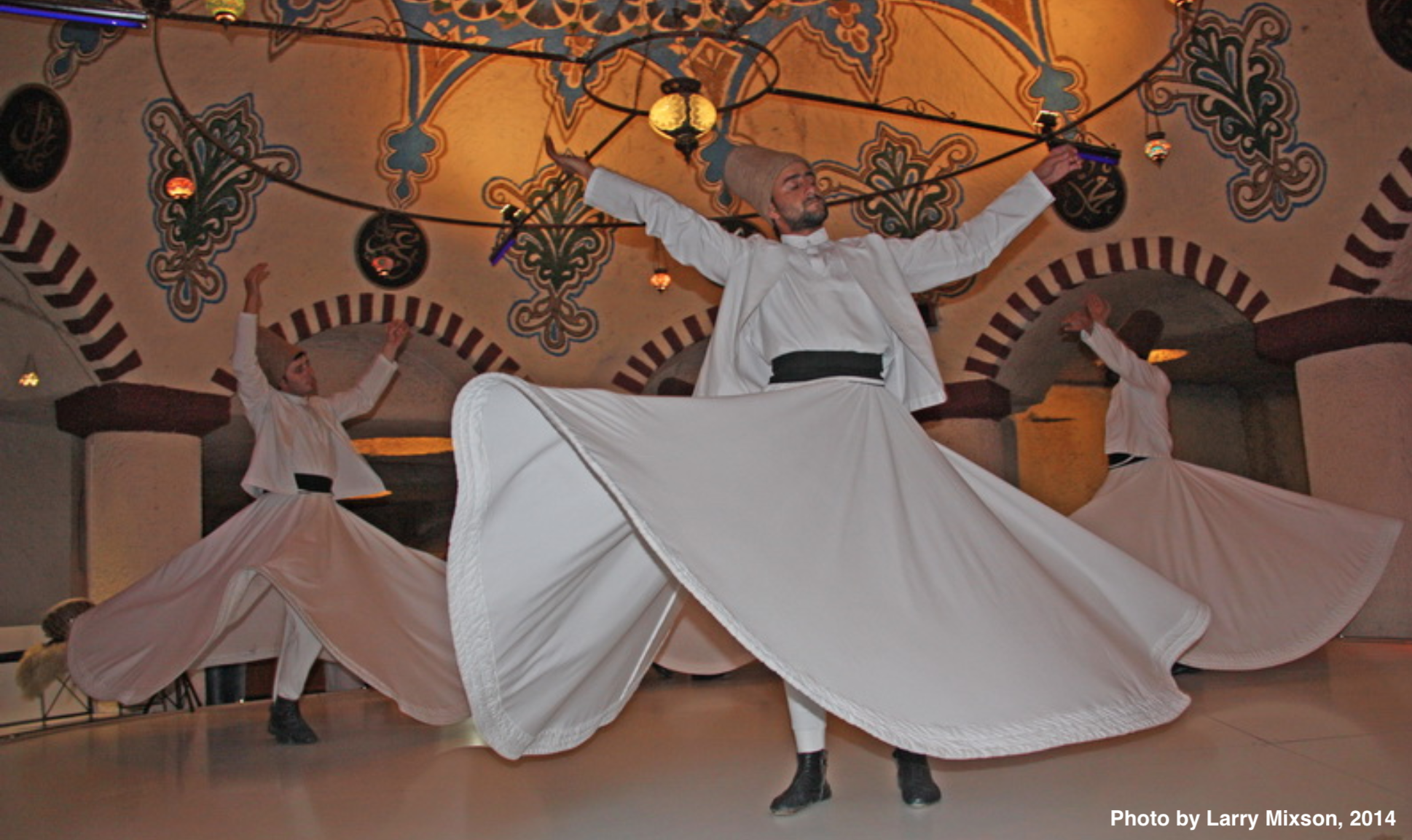Shall we dance?
On a 2014 tour of Turkey, we stopped in Konya, the birthplace of 13th-century mystic scholar and poet Rumi. There, we watched a whirling dervish performance, the Sufi meditative dance representing human's ascent to the divine. Their mesmerizing movement seemed to gather all the worry, disconnection, and hardship of life into an ecstatic sweep of universal loving presence.
Seven years and a global pandemic later, the memory of these whirling dervishes feels especially meaningful when contemplating the nine obstacles to practice found in the Yoga Sutras. One of them, ālasya, is typically translated as laziness, but in researching further I discovered a related word meaning "devoid of dance” – a beautifully forgiving re-frame! Rather than surface-level blame, this nuanced alternative digs underneath what appears to be "lazy," and finds roots of exhaustion, stress, fear, or trauma (Covid, I'm looking at you), all of which can drain our spirits of the life-affirming desire to dance
Whether we feel it or not, we are always dancing. Next time the self-critical creep of laziness leaps to mind, get wise to its misinformed ways. Grant yourself permission to sit still, or lie on the ground, or wander aimlessly on a wooded path. Add to this an awareness of each miraculous breath. Allow yourself to feel the inner dance of simple life: beating of heart and spinning of blood, handoff of oxygen and carbon dioxide, expansion and contraction of organ and muscle tissue, gentle joint articulation of bone to bone.
From this quiet place of awareness, wake up to the music of simple being-ness, and find an easy rhythm for your next thought or action. As we find comfort in stillness, we may also discover the quiet hum of divine presence in the midst of activity. In the words of another great sage, the poet T.S. Eliot, "except for the point, the still point, there would be no dance, and there is only the dance."
With (dancing) love,
@anniebmoyer

